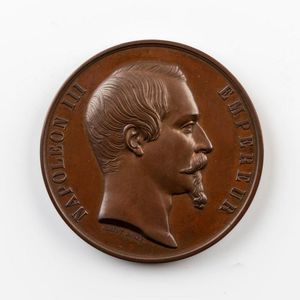Georgian Ebony Inlaid Butler's Tray
You must be a subscriber, and be logged in to view price and dealer details.
Subscribe Now to view actual auction price for this item
When you subscribe, you have the option of setting the currency in which to display prices to $Au, $US, $NZ or Stg.
- Mahogany - Mahogany is a dense, close grained red-coloured timber from the West Indies and Central America. It was first imported into Europe in the the early 18th century and its use continued through the 19th century. It was popular for furniture making because of its strength, the wide boards available, the distinctive grain on some boards, termed flame mahogany and the rich warm colour of the timber when it was polished.. The "flame" was produced where a limb grew out from the trunk of the tree, and this timber was usually sliced into veneers for feature panels on doors, backs and cornices.
Some terms used to describe mahogany relate to the country from which it originally came, such as "Cuban" mahogany, "Honduras" mahogany etc. However unless the wood has been tested the names assigned are more a selling feature, rather than a true indication of the timber's origin. - Boxwood - Boxwood is a hard, yellow coloured, close grained timber. In the 19th century it was often used for inlays, especially stringing, because of its contrasting colour to the darker timbers of the carcase. Stringing is the inlay of a narrow strip of veneer of a lighter colour, such as boxwood along or close to the edges of an object that has been veneered in a darker timber such as mahogany.
Because of its fine grain and resistnce to splitting or chipping it has also been used for treen, turnings, carvings and other small wooden items, such as chess pieces. - George Iii - George III (1738 - 1820) was King of Great Britain and Ireland from 1760 to 1820.
- Ebony - Ebony is a close grained timber, black in colour. It has a fine texture which can be polished to a high gloss, making it suitable for venereering, inlay and stringing and its use as solid timber is resticted to small decorative items and ornamental decoration, such as chess pieces and musical instrument parts. The term "ebonised" means "faux ebony", timber that has been darkened during the polishing process to resemble ebony.
- Circa - A Latin term meaning 'about', often used in the antique trade to give an approximate date for the piece, usually considered to be five years on either side of the circa year. Thus, circa 1900 means the piece was made about 1900, probably between 1895 and 1905. The expression is sometimes abbreviated to c.1900.
This item has been included into following indexes:
Visually similar items

George III crossbanded and boxwood strung mahogany butler's tray with inlaid shell motif, circa 1800, brass handles, bowed and twisted, 7 cm height, 76 cm length, 53 cm depth

George III mahogany butler's serving tray, circa 1800, brass handles, slightly warped, 7 cm height, 82 cm length, 55 cm depth

Great Britain: Thomas Banks, Art Union of London 1858, bronze medal, by L C Wyon, bust left, rev detail from his decoration of Sir Eyre Coote's tomb, a naked Hindu seated on a pedestal, 55 mm.

France - 1855 Napoleon II, Exposition Universelle, copper medal by A. Barre, bust right, reverse armorial devices & border of shields, un-named in cartouche, 50 mm, in case of issue, the lid stamped in gilt, 'Exposition Universelle De 1855 - Medaille De 2M
